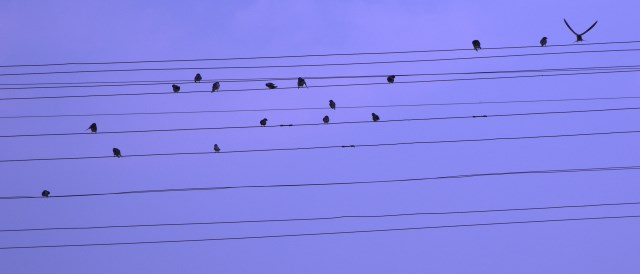Over at the AWEA blog, our colleague Michael Goggin recently wrote of a new record. Craig Morris says the most interesting part was that the data are not publicly available.

Open electricity markets need open data. (Photo by ~Martin~, CC BY-NC 2.0)
The American Wind Energy Association reports that wind power made up 60.5 percent of power demand on Xcel Energy’s grid in Colorado – back on May 24. As Goggin explains it, “it’s never been previously reported,” and the reason is not hard to find.
You see, the information is simply not publicly available. Goggin says he got the news from “an e-mail we just received from an Xcel Energy official.” The blog post is not able to link to any source of this data, real-time or otherwise, though it does include a map showing wind power records across the country.
One marvels at how different the situation is in Germany, where both historic power production and forecasts are available from the Transparency EEX website (in English and German), and you can also check out prices from EPEX (in English, German, and French). There is no fee for basic access.
Nonetheless, the renewables sector itself sees a need for even more public information, which is why Berlin-based think tank Agora Energiewende provides an overview of generation and consumption in English here, primarily to highlight the export/import situation.
And we still haven’t reached the end – Bruno Burger, a researcher at Fraunhofer ISE, Europe’s largest solar research institute, began collating statistics in his spare time (he told me last year there was no project funding for the PDF covering data from 2012). In addition to the raw data available elsewhere, Burger points out highlights – days of especially high/low renewable power production. He has continued producing his overview on a monthly basis in this PDF for 2013. Heck, Fraunhofer has all kinds of interesting PDFs in English.
Want to know the date on which wind power peaked in Germany at its highest level in 2013 to date? It’s slide 219 in Burger’s overview. Want to know when it happened in the US? Then join the club – even AWEA’s Goggin isn’t sure: “to my knowledge, this share of system generation has never previously been reached by US power system.”
The result of all of this open data is twofold – both trivial and serious. On a trivial level, the public is able to read both reports about record levels of wind/solar (and sometimes even record lows) shortly after they happen; likewise, critics of the Energiewende have loads of data to show how terribly things are going – the proponents of the energy transition provide them with it.
On a more serious level, Germany believes in free markets, and free markets require openness – market players have to have access to the same information. The more access to information is restricted, the less open markets are. That’s right – the German power market is more open than the US market.
Finally, it is worth noting that we get the figure for maximum wind power production from a solar researcher. As I pointed out a while back, Germans see renewables holistically. The country has two organizations representing all renewables, and the German wind power organization BWE publishes a magazine on all renewables. There is no such equivalent in the US. This openness – for data, markets, and technologies – is one reason why Germany continues to forge ahead with its energy transition.
Craig Morris (@PPchef) is the lead author of German Energy Transition. He directs Petite Planète and writes every workday for Renewables International.